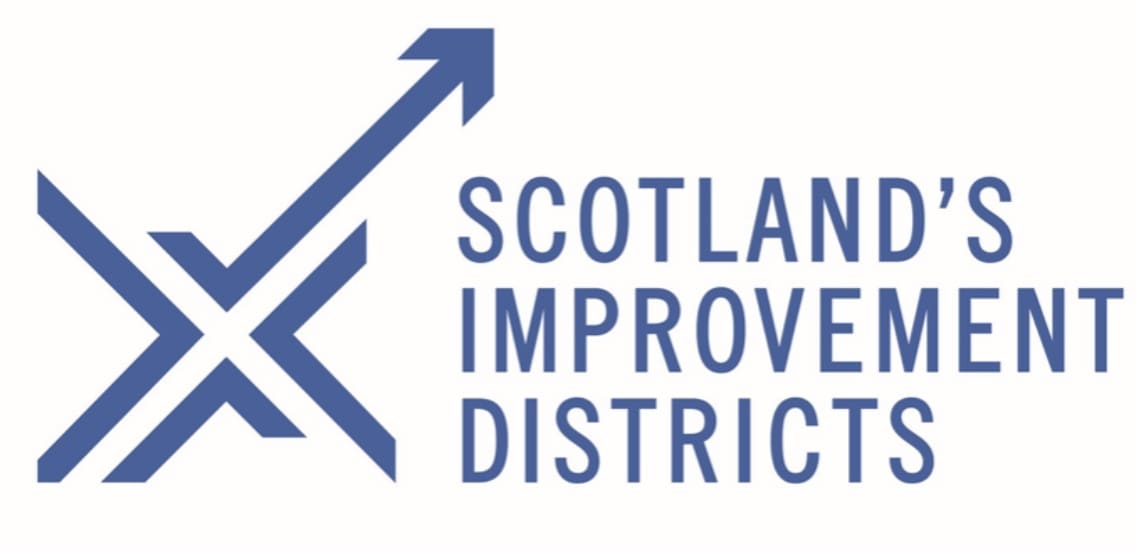‘Silo’ Busting in Place-making with the Academy of Urbanism
In late February of this year, I participated and contributed in a conference at Dundee University held by the Academy of Urbanism. Mixing work and pleasure is always a welcome opportunity with travelling to Scotland.
Connecting to like minded professionals and community for our shared vision on ‘Integrative Place-making – Addressing the ‘silos with collaborative approaches.’ An excellent mix of key notes, presentations and workshops in the afternoon. Bringing together a mixed audience involved and working in urbanism / placemaking at a variety of levels including the all important students. Below I share a brief overview of the day. Sharing which cities participated and by whom they were represented. Presenting on topics relating to each of their city projects sharing some inspiring images along the way.
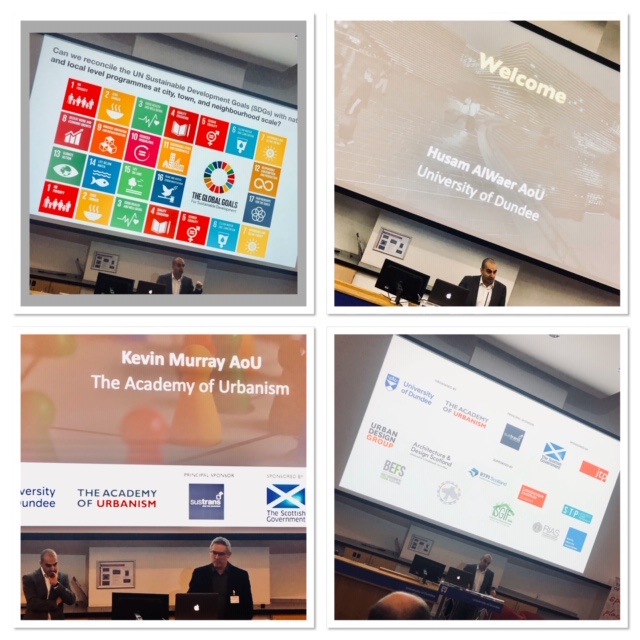
Excellent oganization with attendees from public, private, civic society organisations. Well presented, co-ordinated and organized by Prof. Husam AlWaer from Dundee University and the partners from the AoU including Prof. Kevin Murray from Kevin Murray Associates.
Despite all that has been going on over the last months/years with Brexit, it was good to see close relationship between Scotland and the European cities represented growing stronger. Helped along with experiencing the Scottish hospitality. With the international and home crowd that made up the day’s key notes and experts from a variety of ‘best practice’ cities and professionals. Cities presented included Utrecht, Aarhuus, Edinburgh, Zurich, Porto. With input from a variety of experts along the way.
MORNING PLANERY, KEYNOTES & PANELS
The introduction for the day from Prof. Husam AlWaer and Prof. Kevin Murray explaining the order of the day and posing some questions and statements; “If we can reconcile the UN Sustainable Development Goals (SDG’s) with the national and local level programmes at city, town, and neighbourhood scales? If we can break down the silos of the different disciplines from research & innovation, community health, urban design, community engagement?”

The first presentation came from Aarhus and Stephen Willacy the City Architect from Aarhus. Explaining the variety of creative and culturally inclusive public projects and intiatives from when the City was the European City of Culture in 2017. Explaining the scoring by percentage the ‘temperature’ of the city from the cultural life, public spaces, student life and liveability factor from it’s residents. Going through a variety of slides showing the amazing public spaces, architecture and urban planning of the city which contributes to the social fabric of the city. Bringing together young, the old and families together in the public spaces, both in the inside and outside of the buildings, such as the central Library. An example of a progressive city co-designed with the people, for the people and achieving sustainable and inclusive public spaces.
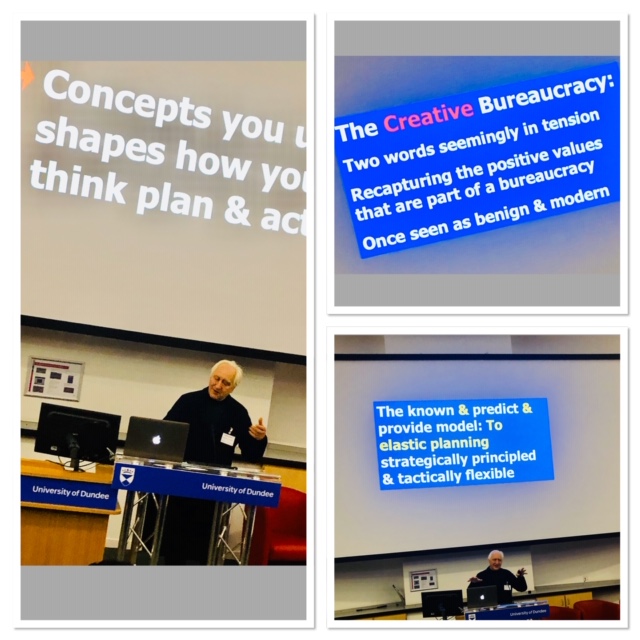
Following on, were the wise words and global vision from Charles Landry, an international adviser on the future of cities and the founder of the Creative Bureaucracy movement. A movement that has grown from the Berlin gathering to the global movement reaching as far as South Africa. Presenting an overview from the many aspects we should consider. Suggesting how the ‘future bureaucrat’ ideally requires to be more agile and be more open than closed. Stating the need for changing mindsets and to be more emotionally intelligent, whilst possessing generic and technical skills. He emphasised one of the most important aspects in order to break the silos is to work collaboratively. Plenty of thought provoking aspects to the way the urban life and society is moving and changing at a fast pace. Stating the need to consider all aspects when looking at the global view with taking local action.
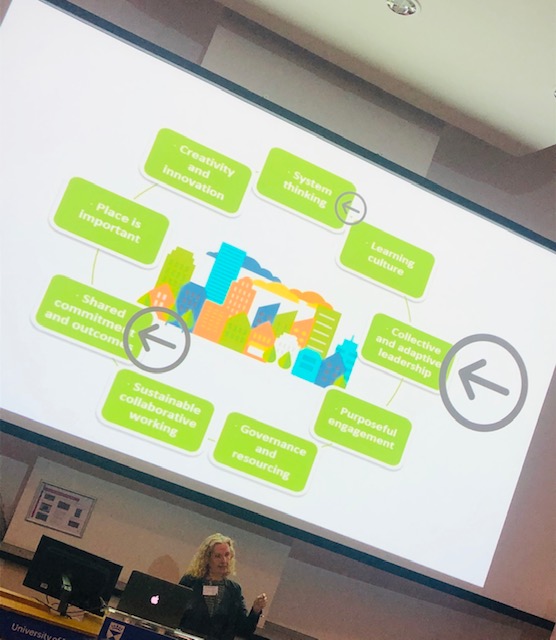
Irene Beautyman from Improvement Service also gave plenty to ponder over with ‘We are all Bridge Builders Health and Place’. Having worked on the Scottish public health reform and the six public health priorities, taking a whole systems approach. Working from the national planning framework, local development plans and the planning permissions.
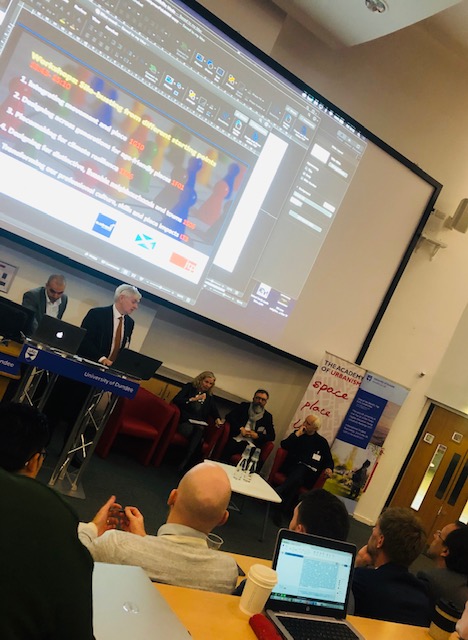
Robert Huxford, Director of the Urban Design Group hosted the panel discussion on the morning sessions. With a brief outline from Prof. Husam for the different starting points of the 5 workshops to be held in the afternoon sessions. The first ‘Intergrating movement and place’, second on ‘Designing across generations for age-friendly places’, third on Placemaking for climate resilience’, fourth on ‘Distinctive, liveable neighbourhoods and towns’, which I had the pleasure to co-facilitate with Stephen Proctor, which I’ll come back to this later. The fifth workshops was ‘Transforming our professional culture, skills, and place impacts.’
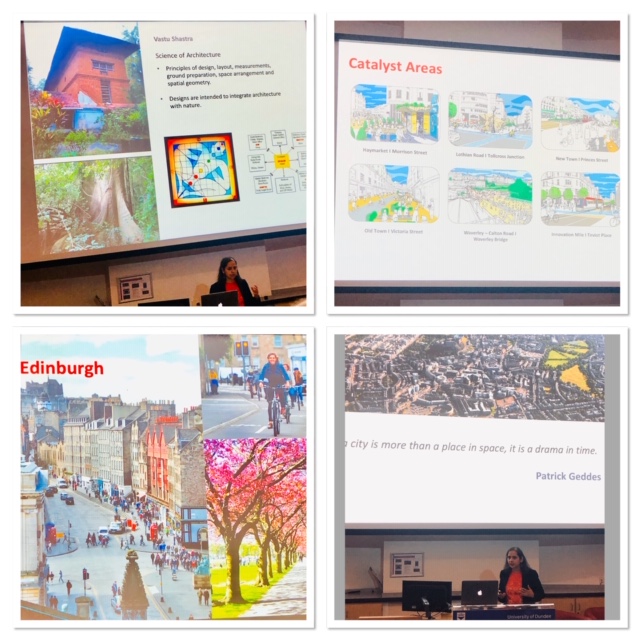
The plans for Edinburgh becoming a more accessible, liveable, walkable and healthy city were presented by Director of Urbanism for Sustrans, Daisy Narayanan. Sharing her personal story and interest stemming back to her home county of India. An array of projects around the Capital, which have seen some areas being transformed and contribute to become pedestrianized. The zones or ‘catalyst areas’ as described by Daisy around Edinburgh, that are currently being improved; Haymarket, New Town – Princes Street, Innovation Mile / Teviot Place, Waverly-Carlton Road/Waverly Bridge, etc. Stating that ‘Cities have the capability of providing something for everybody, only because and only when, they are created by everybody.’
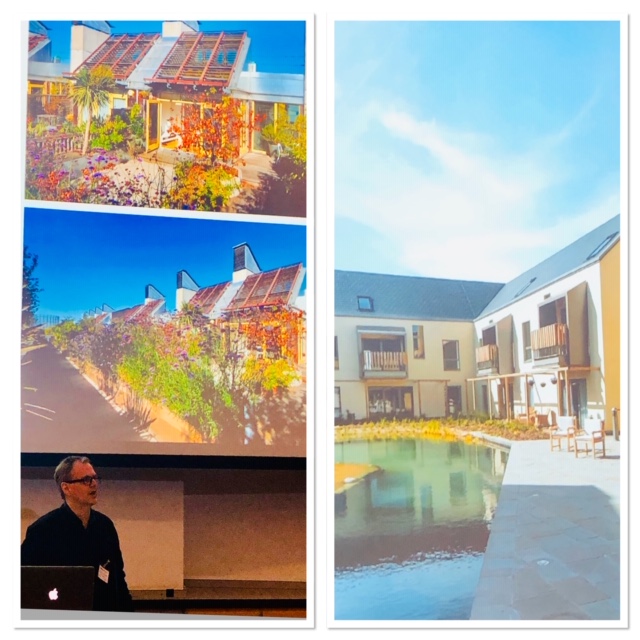
and Matthew Architects
The penultimate presentation goes from the city to the architectural practice of Protor and Matthews, with Stephen Proctor explaining the variety of residential projects across the UK, looking at the different housing types and taking the local environment and context into consideration. Some of the public spaces for some of the clusters of housing, which also considers creating car free zones for intergenerational members of community, creating that all important ‘inclusive’ aspect. Whilst explaining the careful consideration given to the overall context and history of each project, in order to the contribute to the all important narrative.

Moving back to mainland Europe and specifically the Netherlands, with Kees Verschoor, the Urban Planning Strategist of the City of Utrecht. Explaining ‘How to develop a healthy city’ with an overview of the development strategy of the city. With Utrecht being next to Copenhagen as the 2nd bicycle city in world with having 100,000 bikes roaming through the city every single day. Looking at the health across the city with the differences in life expectancy which is influenced by a number of factors and only becomes more apparent in certain neighbourhoods of a city. Taking a comprehensive approach, which included an interesting visual mapping of the ‘people – economy – urban planning’ and a barcode toolkit. Creating healthy urban living for all, with connecting all the dots.
AFTERNOON WORKSHOP – ‘DESIGNING FOR DISTINCTIVE, LIVEABLE NEIGHBOURHOODS & TOWNS’
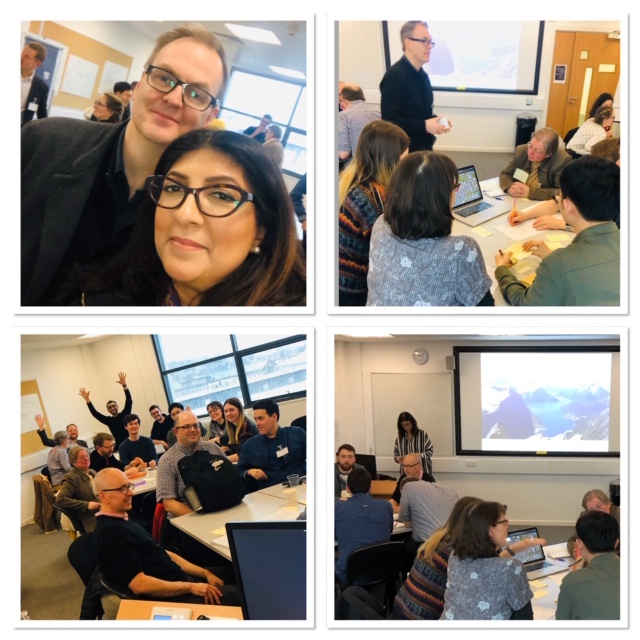

As mentioned earlier, I had the pleasure to contribute with co-facilitating the session on ‘Designing for distinctive, liveable neighbourhoods and towns’. Co-facilitating with Stephen Proctor of Proctor and Matthews Architects. Stephen and I had never met before, yet had the opportunity to connect a good 2/3 weeks before the conference to share our views on the approach to the workshop. I was pleased to lead in the facilitation process and methodology with some of my previous facilitation experiences. Thinking back to when I had also been on the other side as a participant, in workshop during the European Commission’s FTA – Futures in the Making conference in 2018. I had the pleasure to participate in this workshop which was co- facilitated by two globally renowned experts in Futures, Unesco Chairs, Prof. Riel Miller and Prof. Sohail Innayatullah. With a keen interest and combining some of my experience on Design Strategy, along with more knowledge on Futures and Scenarios, I decided to take Prof. Innayahtullah’s Future Triangle, as a basis for the workshop that I prepared.
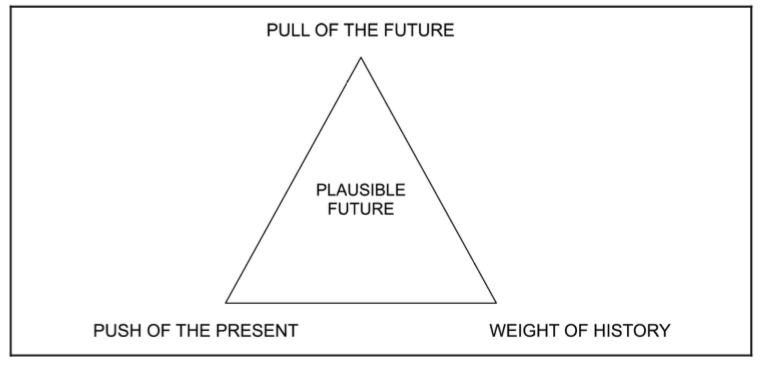
The Futures Triangle (above) is a futures method by Sohail Innayatullah. There are three dimensions to the triangle which relate to each of the three angles. Each have possibilities with images corresponding to each angle. The pulls of the future with desired images of the future, the pushes of the present such as trends of the moment which influence the future. Then finally weights and barriers of the past. Using this method we encouraged much discussion with brainstorming within the groups on each of these dimensions. A valuable paper to read to gain further understanding on this and futures thinking is ‘Six pillars: futures thinking on transforming’.
Each group focussing on the desired image of the future for their chosen city, town or neighbourhood, with the weights of the past and pulls of the future with the trends. With adding some role play, not quite having the props I had use of in the FTA workshop, yet impactful all the same. The mix of the participants were from public policy, private sector, architects, urban experts to students, each taking up the role of the other, with choosing persona’s from the pentagonist to the antagonist. It was good to have the role play and having the participants step into the shoes of the other encouraging the ’empathy’ factor.
Also, to have the participants use live examples of neighbourhoods, towns and cities of where they are from in each of their groups. Collectively deciding which area would be their area of focus and together discussing what the are plausible scenarios of this area, considering their knowledge of the challenges at a local level and awareness of the global challenges we face. Identifying the ‘DNA’ of the area and how this could contribute to the desired future(s).
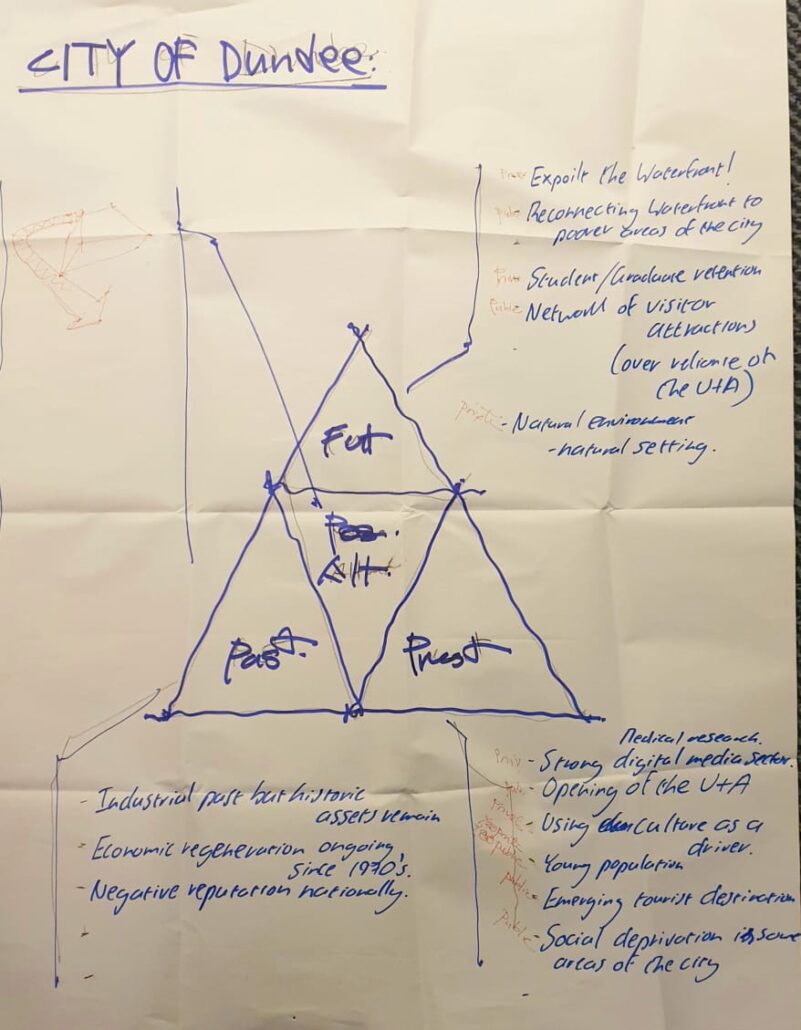
Using the Future’s Triangle tool combined with the role play and methodology used created a lively interactive session. The interaction within the groups resulted in the all important ‘fun’ aspect that makes it all the more engaging for the participants. It brought about many interesting outcomes from each group to ponder over beyond the workshop. Especially with one from each group knowing the history, narrative and context of the chosen neighbourhood or city.
One group took the example of our host city of Dundee. Establishing assets of the city such as it’s striking V&A museum, the diverse multi-cultural communities and need to link this to the social fabric of the city.
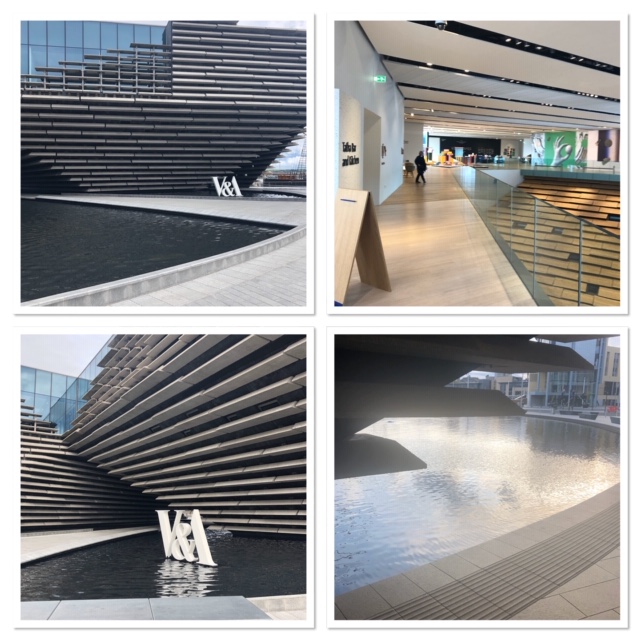
Challenging the perceptions of the ‘openness’ of the cultural aspects of the city should become accessible to all, knowing the challenges of the ‘silos’ and the industrial past of the city. The mixed group of academics, professionals and students, which also included Prof. Dr. Adel Alzahrani who joined us as one of many participants. Travelling from the Middle East for the day long conference. Together with his group discussing how the serene waterfront should be exploited and reconnect to the ‘power’ areas of the city. Discussing how the city should optimise and build on the student retention with it’s many local and international students. Whilst making the most of the natural environment and settings of this city, which as been emerging since it’s cultural injection of the being a Unesco City of Design and with it’s striking V&A Museum. Building on the narrative as a City of Design & Culture and distancing from the negative image of the past. With sharing the tools and methodology enabled the participants to step out of their comfort zones with the role play. Also enabling them to see the value of experimentation with input from interdisciplinary teams. Working towards not one given vision, yet a variety of desired futures, with taking different perspectives, challenges and drivers into account. Stephen and I were pleased to have positive feedback from this workshop.

Outcomes and findings from all five workshops, were summarised in a panel discussion moderated by Kevin Murray. Each session using different facilitation, yet all 5 workshops engaging with the multi-sector participants and discussing topics from climate resilience to transforming our work cultures.
AFTERNOON PLANERY, KEYNOTES & PANELS
The afternoon sessions seen the Planery sessions with Charles Landry giving an overview with the ‘Rapporteurs feedback’. Again Charles giving an exemplary summary of this with his usual charismatic way, with the panel of Aarhus, Edinburgh, Utrecht and Stephen Proctor sharing a Q&A session and interacting with the audience.
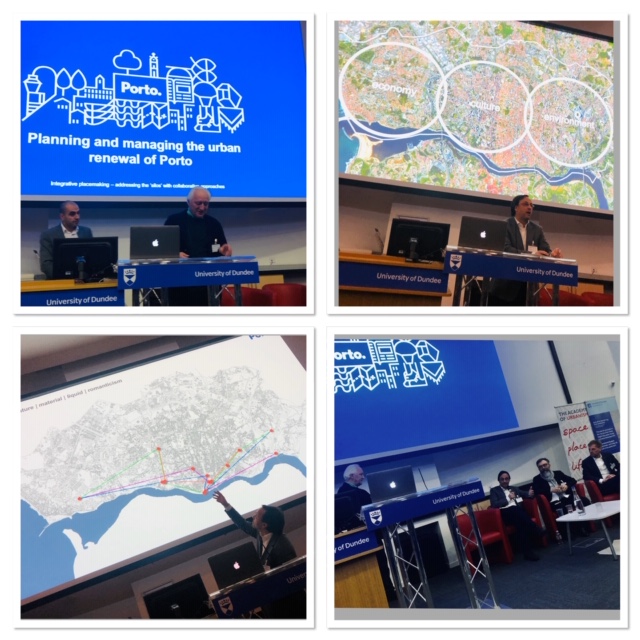
Yet the day was not over as yet, with a feast of the second sessions of key notes on their way. Pedro Baganha, the Porto City Councillor spoke about ‘Planning and managing the urban renewal of Porto’. I was lucky enough to be in the beautiful city of Porto only 2 weeks prior for an Urban Design Governance workshop, in which the plan for the city over last years had been explained. Pedro shared his insights and the harsh realities from the poverty to the innovation from the recent years, to Porto becoming the tourist attraction it is today.
CONFERENCE CONCLUDING REMARKS
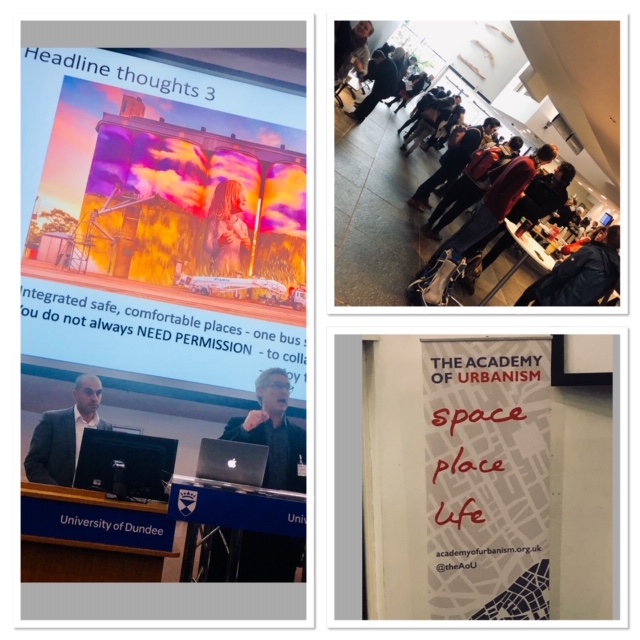
Concluding remarks from Prof. Kevin Murray explaining some thoughts from the day. With looking at 21st century challenges including Governance and how there is a need to include adaptive and progressive leadership models, that should directly feed into the needs of the societal challenges we are facing. Stating the importance of the partnerships and having integrated solutions working collectively that take years to build. The need for taking an interdisiplinary approach and with considering cultural sensitivities. He went on to conclude that ‘Creative Bureaucracy’ should be built upon principles and values and not on rules and restrictions. Concluding with the need to have more empathy and to think of the inclusive aspects of those that are the most vulnerable in our communities, with those with disabilities. Poignant remarks to end the day with this ‘human’ aspect to creating a more sharing and caring communities.
KEY TAKEAWAYS
I share some of my key takeaways from my experience of the conference, workshop and with connecting with many of the experts I met. In order to reconcile the UN Sustainable Development Goals (SDG’s) with the national and local level programmes at city, town, and neighbourhood scales, we need to connect, collaborate and act with coherent strategies to achieve the shared vision of our desired future(s). Connecting from Government administration and policy level to our eco-system of change makers, ‘actors’ and citizens. Finding new ways of working together ‘on and off-line’ during this existential speed of change during this era of digital transformation, demographic changes of our cities and impact of climate change. To think about transforming the way we do just about everything from designing our cities to redesigning our democracies. To consider how we would imagine ‘designing inclusive communities’ of the future. With taking the global vision and targets of the SDG’s as a base and implement together with multi-stake holder, cross-sector, interdisciplinary diverse groups. The need to take the human-centric approach and ‘re-design’ our processes of Governance. Connecting with inclusive participatory processes that allow for every actor / stake holder to have a ‘voice’ in order to achieve and work towards the social justice of ‘equal cities’ and to build upon the resilience. Ideally not in a one off sessions, yet engaging citizens throughout the whole process, in order to achieve safe, sustainable healthy communities. To break the ‘silos’ that exist, with learning from each other and the many best practices we have around Europe and beyond. Having conferences, debates and discussions such as this one, certainly helps in breaking the silos and having the all important empathy to build towards a greater collaboration between people, communities and cities.
A big thank you to the Academy of Urbanism and Dundee University. In particular to Prof. Husam AlWaer and Prof. Kevin Murray for the invitation to participate and contribute in this conference. Also thank you to all the students right through to the professional experts/speakers for connecting and sharing. Not forgetting Stephen Proctor and all the participants from the workshop we co-facilitated together.
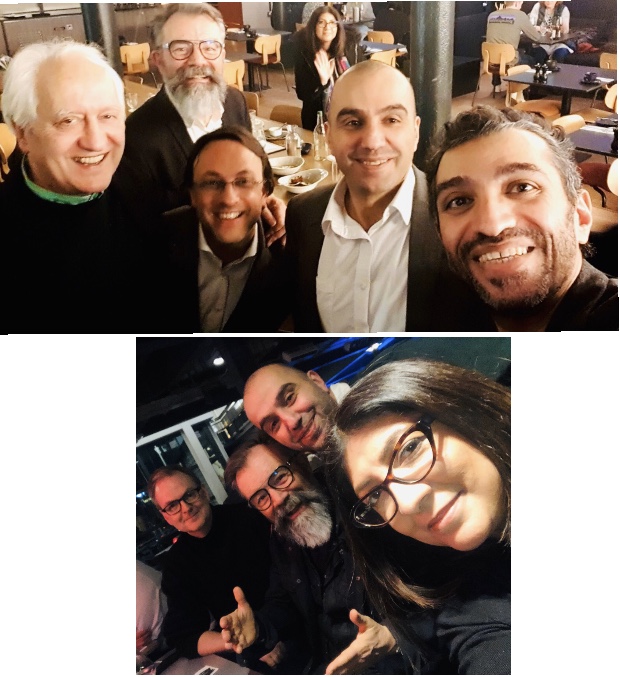
Below photo l-r: Stephen Proctor, Stephen Willacy, Husam AlWaer, Rozina Spinnoy




